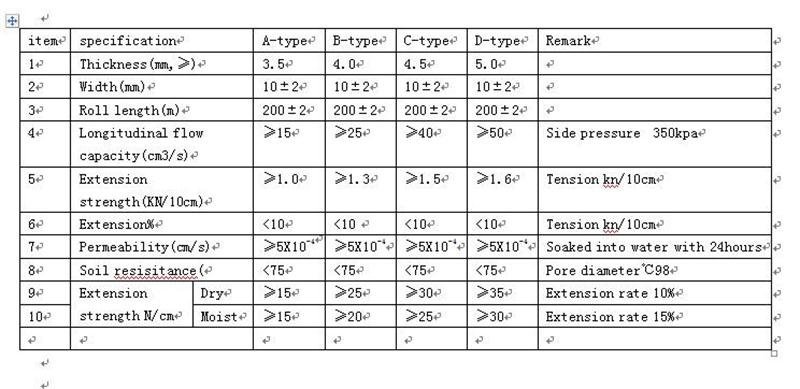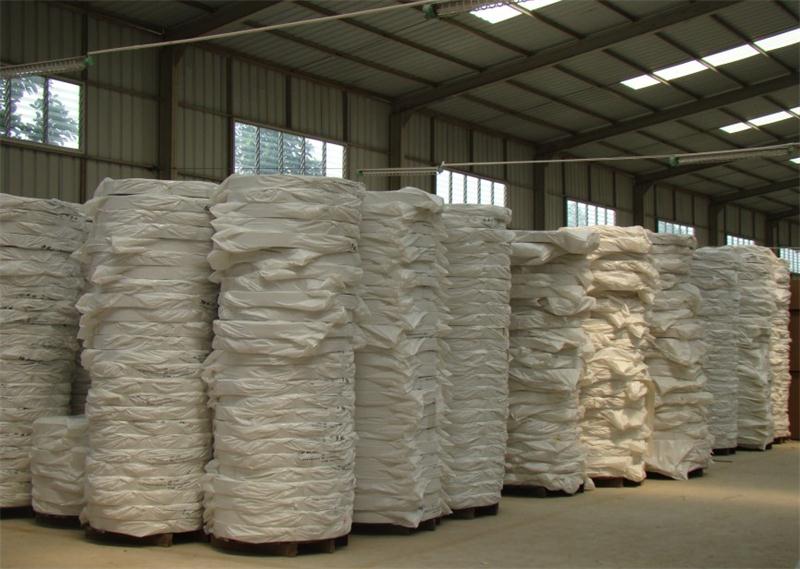The 21st Century Business Report has previously reported that although the risk of default since the beginning of the year has not affected corporate bonds that have always been endorsed by government credit, in early August, the National Development and Reform Commission held a corporate bond risk symposium, inviting some provincial-level development and reform commissions, brokers, rating agencies and other institutions. Participate in the comments on how to strengthen the corporate bond review and management methods, and prompt the current potential risks of corporate bonds. The "Opinions" were formed on the basis of this symposium and solicitation of opinions.
Specifically, the access conditions of some bond-issuing enterprises have been raised, especially the demand for asset-liability ratios has increased. For example, the two asset-liability ratios of the “accelerated review category†are lower than 30% and 50%, down to 20% and 30%, a significant decline means stricter access.
The head of the Fixed Income Department of a brokerage company told the 21st Century Business Herald that in terms of corporate bonds, because it carries more of the government's macro-control strategies and industry-oriented functions, it may generate government credit in the event of default. Adverse effects, raising the threshold for review will help reduce the risk of default.
At the same time, the "Opinions" have also added a number of new requirements, especially related to the proportion of accounts receivable.
However, the research report of CICC also pointed out that the space for flexible control is still relatively large in the relevant provisions, and the effect and intensity of actual implementation remain to be seen. In addition, the words “in principle†and “strict control†are used many times in the text, which also leaves room for flexible operation in the actual review process.
City investment debt review
Judging from various measures, the NDRC is tending to tighten the review of corporate bonds, especially urban investment bonds.
In April 2013, in order to further improve the review of corporate bond issuance, the National Development and Reform Commission issued the “Notice on Further Improving the Issuance of Corporate Bond Issuance†(Development and Reform Office Finance [2013] No. 957), applying for corporate bond issuance, according to “ Accelerate and simplify the auditing category, the “strict auditing class†and the “appropriate control of scale and rhythm class†for classified management.
Correspondingly, the current "Opinions" have tightened the standards for the examination of the first two types of corporate bonds.
First of all, for the speeding up and simplification of the audit class, in the "No. 957", "unsecured bonds with an asset-liability ratio below 30%, a relatively good credit arrangement and a subject credit rating of AA+ and above", and a regional investment company owned by the local government The requirements for the first corporate bond to be issued and the issuer’s asset-liability ratio below 50% are reduced to 20% and 30% respectively in the Opinions. In other words, the issuer's asset-liability ratio is more demanding.
Secondly, for the strict review class, "No. 957" proposes "a bond with a high asset-liability ratio (more than 65% of urban investment enterprises, more than 75% of general production and operation enterprises) and debts below AA+", In the case of urban investment enterprises that issued bonds twice or more and whose asset-liability ratio was higher than 65%, the three ratios fell to 60%, 70% and 60% in the Opinions.
According to the statistics of CICC Securities, among the 979 sample of urban investment issuers, there are 175 asset-liability ratios exceeding 60%. In principle, these issuers must issue additional guarantees; among them, the main body rating is AA and below. There are 93 companies. If these enterprises can't reach AA+ through guarantee and increase the number of bonds, or they issue bonds twice in a row, they will be classified as “strictly reviewedâ€, and it is more difficult to issue bonds.
City investment bonds can be described as "concerned" in the "Opinions."
The "Opinions" pointed out that if a city investment enterprise applies for issuing bonds, "the regional full-caliber debt ratio exceeds 100%, and it is temporarily not accepted that the urban investment enterprises in the region may add a government debt burden to issue bonds."
According to the director of the fixed income department of the brokerage firm, according to the previous regulations, the premise of non-acceptance is that the operating income of the investment and financing platform accounts for more than 30% of the company's income. The cancellation means that the scope of inadmissibility will be further expanded.
At the same time, in accordance with the corporate bond audit work manual issued in 2013, it is required that “the size of the bond is as close as possible to the local government's financial strength and corporate strength. In principle, the size of the bond application cannot exceed the general budget of the local government.â€
In general, corporate bonds are divided into two categories, one is urban investment bonds, and the other is industrial bonds. City investment bonds are issued by local government investment and financing platforms, mainly for investment purposes such as urban infrastructure. Most of the main businesses of such companies are local infrastructure construction or public welfare projects. Land mortgage transfer is the most important form of repayment, and the fluctuation of its valuation value may increase the uncertainty of the source of debt repayment.
A number of new requirements "plus code"
In addition to raising the standard for entry barriers, it is worth noting that the Opinions added an access requirement, that is, to focus on the accounts receivable of the issuing companies.
The "Opinions" require that the accounts receivable, other accounts receivable, and long-term accounts receivable of the government and relevant departments should exceed 40% of the net assets, and the enterprise should pay attention to the accounts receivable and other receivables. Enterprises with accounts, long-term accounts receivable and projects under construction involving a total amount exceeding 60% of the net assets, illegally invoking funds by the relevant government departments, or failing to perform the payment shall not accept the application for issuance of bonds.
This is in line with the summary of the symposium in early August, the accounts receivable and other receivables totaling more than 40% of the net assets, and the relevant provisions on inadmissibility have been alleviated.
CICC’s August report pointed out that 40% of this indicator is more difficult to count than the excess limit, and can only be specifically disclosed in the annual report notes. However, considering that the business of many city investment companies is mainly based on infrastructure, land development, etc., the proportion of accounts receivable from the government may easily exceed the standard. For such enterprises, it is difficult to meet the requirements, and it is only necessary to increase the scale of net assets or speed up the recovery of funds, which is equivalent to the demand for local government support.
According to the above-mentioned director of the fixed income department of the brokerage firm, although the "Opinions" determined the proportion of 60%, some enterprises still have greater pressure.
At the same time, the "Opinions" also put forward new requirements in the aspects of supervision and comprehensive supervision.
The "Opinions" proposed that the comprehensive supervision of government debts at the location of enterprises should be strengthened. A new requirement was added, that is, "the ratio of outstanding corporate bonds and medium-term notes issued by local government-owned urban investment enterprises to the local government's GDP for the year exceeded 8%. The issuing of bonds by the city investment enterprises should be strictly controlled."
According to the statistics of China Gold Securities, among the 221 municipal government samples, there are 13 corporate bonds and middle-office balances accounting for more than 8% of GDP in 2013. In some regions, the investment of city investment companies may be “strictly controlledâ€.
The "Opinions" also warned of high-cost financing activities such as the collective trust plan and the "funds and real bonds" special fund. For the first time, it was clearly stated that "the enterprises that are still blindly carrying out short-term high-profit financing after 2013 will achieve the comprehensive cost of short-term high-profit financing. The benchmark interest rate of the same term loan of the bank is more than 1.5 times, and the accumulated amount exceeds 10% of the total debt of the enterprise, and the application for corporate bond issuance is no longer accepted."
According to the current one-year loan benchmark interest rate of 6%, more than 1.5 times is more than 9%. CICC Securities has a rough understanding that the expected yield of the 1-2 year trust products of the City Investment Platform is about 8.5%-9.2%, plus other expenses such as trust remuneration, the comprehensive cost is generally 10%-12%, even the strength. Stronger prefecture-level city trust financing costs are also difficult to be less than 9%. This rule will make it difficult for companies that have conducted large-scale trust financing in 2013 to issue corporate bonds.
Drainage Strip (named Plastic vertical drain) is like a cross parallel strips made of polyethylene and polypropylene as core board and wrapped by non-oven fabric as filter layer. Core board is to play a supportive role and drain the leaking water and air out of ground. Plastic vertical drain is inserted into soft soil foundation by drilling machine, under the upper part of the prepressure loading. The pore water in soft soil will be drained out through plastic vertical drain to the horizontal drainage system, and drain outward to accelerate the soft ground consolidation.

Features for Plastic vertical drainage strip:
1. Good Filtration performance, smooth drainage, drainage effect is guaranteed.
2. Good strength and ductility, can be suitable foundation deformation capacity without affecting drainage performance.
3. The section size of drain is small, so disturbance is small too to the foundation when in operation.
4. Fast construction and working time is short. Each drilling machine can finish over 15,000 meters, which greatly save cost and shorten the construction period.
5. Flexible construction and low requirement to construction environment, applicable to variety of soft soil foundation and super soft soil foundation reinforcement treatment.

Specification and Technical data:

Packing: Woven bag / PE bag packing or at customers' request.
Shipping: FOB Changsha, customized shipping-terms and appointed port accept.

Drainage Strip
Drainage Strip,Drainage Sheet Strip,Stainless Steel Strip,Geotextile Composite Drainage Strip
Shandong Tianhai New Materials Engineering Co., Ltd , https://www.chinatinhy.com